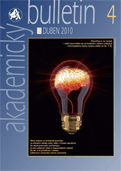Academy of Sciences of the Czech republic › About AS CR › AS CR Structure › Research institutes › neziva
Institute of Mathematics of the ASCR, v. v. i.
Institute of Mathematics of the ASCR, v. v. i.
Žitná 25
115 67 Praha 1
115 67 Praha 1
Phone: +420 222 090 711
FAX: +420 222 090 701
E-mail: mathinst@math.cas.cz
Chart: mu_chart.pdf
The Institute was formed in 1947 as the Institute of Mathematics of the Czech Academy of the Sciences and Arts. In 1950 it was reorganised to form the Central Mathematical Institute, which became a part of the Czechoslovak Academy of Sciences in 1953 as the Mathematical Institute. Pursuant to Act No. 341/2005 Coll., the Institute became a public research institution on 1 January 2007.
The principal activity of the Institute of Mathematics (IM) of the Academy of Sciences of the Czech Republic, v.v.i. is scientific research in the fields of mathematics and its applications and providing the infrastructure for research. The IM contributes to raising the level of knowledge and education and to utilising the results of scientific research in practice. It acquires, processes and disseminates scientific information, issues scientific and professional publications (monographs, journals, proceedings, etc.). In cooperation with universities, the IM carries out doctoral study programmes and provides training for young, aspiring scientists. The IM promotes international cooperation, including the organisation of joint research projects with foreign partners and participation in exchange programmes. The IM hosts scientific meetings, conferences and seminars on the national and international levels. Research at the Institute is concerned mainly with mathematical analysis (differential equations, numerical analysis, functional analysis, theory of real functions and function spaces, mathematical physics), mathematical logic, theoretical computer science and graph theory, numerical algebra, topology (general and algebraic), probability theory and mathematical statistics, differential geometry, and theory of teaching mathematics.
The principal activity of the Institute of Mathematics (IM) of the Academy of Sciences of the Czech Republic, v.v.i. is scientific research in the fields of mathematics and its applications and providing the infrastructure for research. The IM contributes to raising the level of knowledge and education and to utilising the results of scientific research in practice. It acquires, processes and disseminates scientific information, issues scientific and professional publications (monographs, journals, proceedings, etc.). In cooperation with universities, the IM carries out doctoral study programmes and provides training for young, aspiring scientists. The IM promotes international cooperation, including the organisation of joint research projects with foreign partners and participation in exchange programmes. The IM hosts scientific meetings, conferences and seminars on the national and international levels. Research at the Institute is concerned mainly with mathematical analysis (differential equations, numerical analysis, functional analysis, theory of real functions and function spaces, mathematical physics), mathematical logic, theoretical computer science and graph theory, numerical algebra, topology (general and algebraic), probability theory and mathematical statistics, differential geometry, and theory of teaching mathematics.






